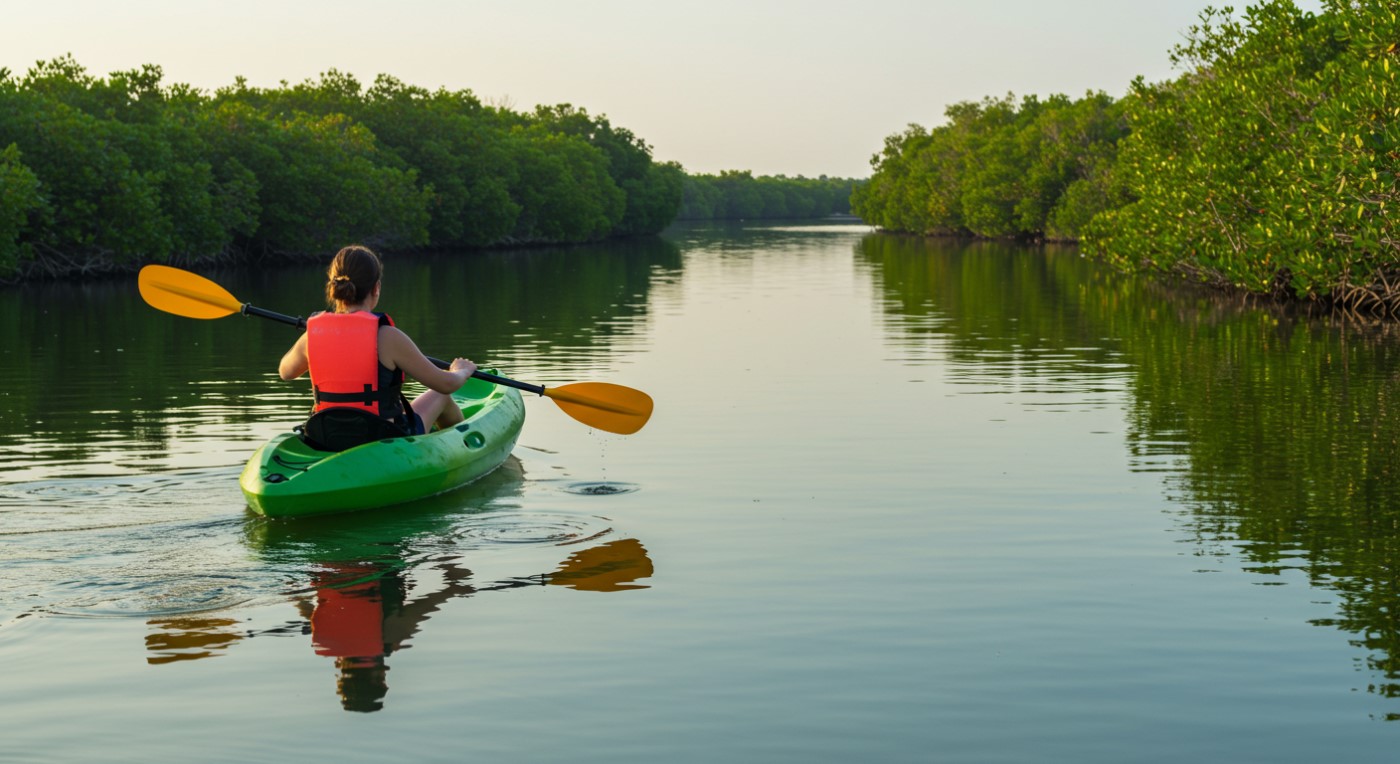
What is the Best Time of Year to Go Kayaking in Abu Dhabi?
Abu Dhabi’s coastline and mangrove ecosystems make it one of the best destinations in the UAE for kayaking. Whether you’re interested in eco-tourism, wildlife encounters, or a peaceful paddle through nature, the timing of your trip can greatly affect your experience. While kayaking is possible year-round, not all months offer the same weather, water conditions, or wildlife visibility.
From cooler winter months with calm waters and crisp air to the hotter summer stretch where conditions can be more intense, planning your outing at the right time can make the difference between a good trip and a great one. Factors like humidity, tide levels, wind speed, and even bird migration seasons all play a role. And if you’re hoping to kayak through Abu Dhabi’s iconic mangroves, knowing the best season ensures you’ll see them at their most vibrant — with better water clarity and thriving marine life.
So, what is the best time of year to go kayaking in Abu Dhabi? Let’s break it down.
Abu Dhabi’s Climate and How It Affects Kayaking
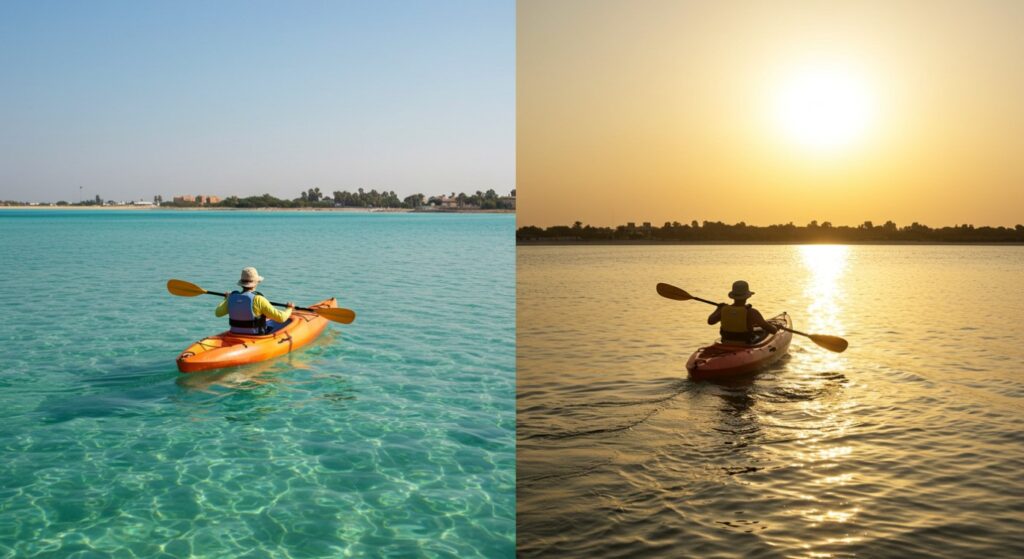
With its hot desert climate, Abu Dhabi sees long summers and mild winters. For outdoor activities like kayaking, this means that seasonal timing is critical. Summers often reach highs over 45°C (113°F), creating difficult and sometimes unsafe conditions for paddling. Humidity, sun exposure, and sea surface temperatures can all impact your comfort and safety.
By contrast, the cooler months from November to March provide far more favorable conditions for outdoor water activities in Abu Dhabi. The air is less humid, the sun is less intense, and the chance of sudden weather disruptions is low.
Best Time of Year to Go Kayaking in Abu Dhabi: November to March
The ideal kayaking season in Abu Dhabi falls between November and March. This is when weather, wildlife activity, and water conditions align to create the most enjoyable paddling experiences.
During this period:
- Daytime temperatures range from 19°C to 26°C (66°F to 79°F)
- Humidity is lower, reducing fatigue during longer paddles
- Winds are calmer, which means flatter, safer water conditions
- Visibility is better, enhancing the experience for wildlife spotting and photography
This is also peak season for mangrove kayaking in Abu Dhabi, with both tourists and locals taking advantage of the comfortable climate to explore marine ecosystems.
Understanding Tide and Water Conditions
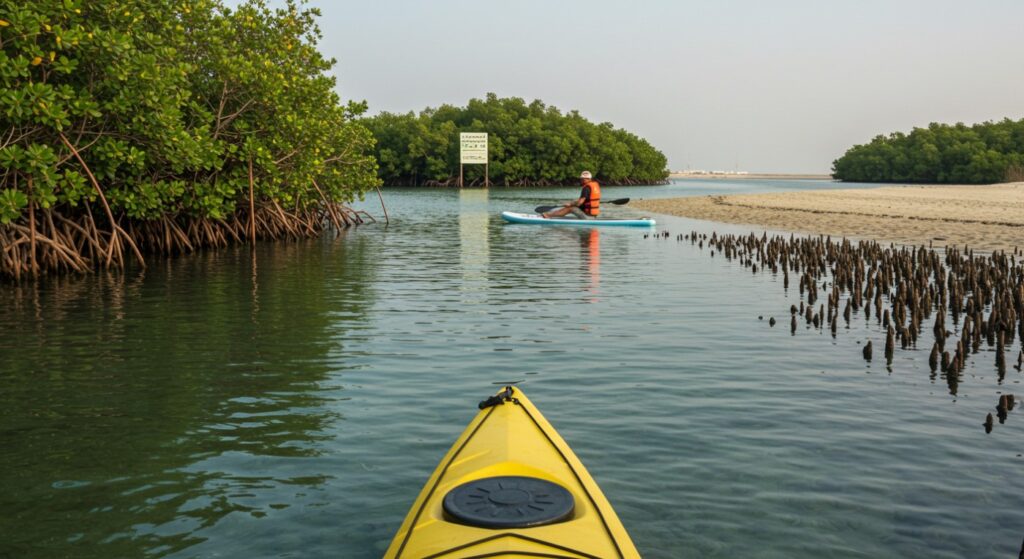
Tide plays a key role in Abu Dhabi kayaking tours—especially in mangrove areas. At low tide, some mangrove routes may become too shallow to access, limiting how far you can go. At high tide, however, these same areas open up into winding green tunnels with calm waters ideal for kayaking.
While tide charts shift daily, the cooler months tend to bring more predictable and manageable water movement. These months also feature lower average wind speeds, which enhances safety and keeps the paddling experience smooth and serene.
Wildlife Viewing in Mangrove Kayaking
From migratory birds to sea turtles and crabs, wildlife in Abu Dhabi’s mangroves is most active between November and March. This is when birdwatchers and nature photographers flock to the region to capture glimpses of herons, flamingos, and even fish leaping through the water.
The cooler weather and clear skies make this the best time to see and photograph these natural wonders. For eco-tourists or families with children, this season provides both comfort and discovery.
Best Times of Day for Kayaking
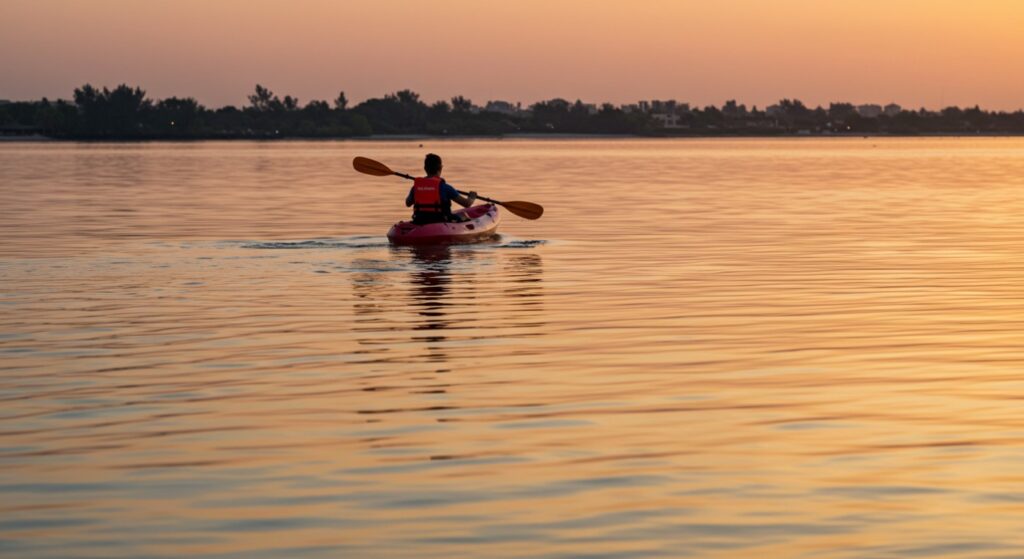
Even in the cooler months, the time of day can make or break your kayaking trip. Early mornings and late afternoons are ideal. The air is cool, the light is soft, and wildlife tends to be more active. Sunrise paddles are particularly peaceful, offering a unique perspective of the mangroves and waterways as the city slowly wakes up in the background.
Whether you’re taking part in a guided mangrove tour or exploring calmer coastal areas, sticking to these time windows ensures a more relaxed and immersive experience.
Shoulder-Season Kayaking: April and October
April and October bridge the gap between Abu Dhabi’s mild winters and scorching summers. Average daytime highs hover between 30 °C and 35 °C (86 °F – 95 °F), with noticeably higher humidity than in winter.
- Why go now? Fewer tourists, lower tour prices, and plenty of daylight.
- Conditions on the water: Early-morning paddles (before 9 a.m.) are still comfortably cool, while late afternoons offer gentler light for photography and wildlife watching. Expect slightly choppier seas than in mid-winter, but still manageable for beginners.
- Precautions: Hydrate often, apply reef-safe sunscreen, and choose itineraries under two hours. Lightweight, long-sleeved clothing helps manage both sun and humidity.
Summer Heat: June – September
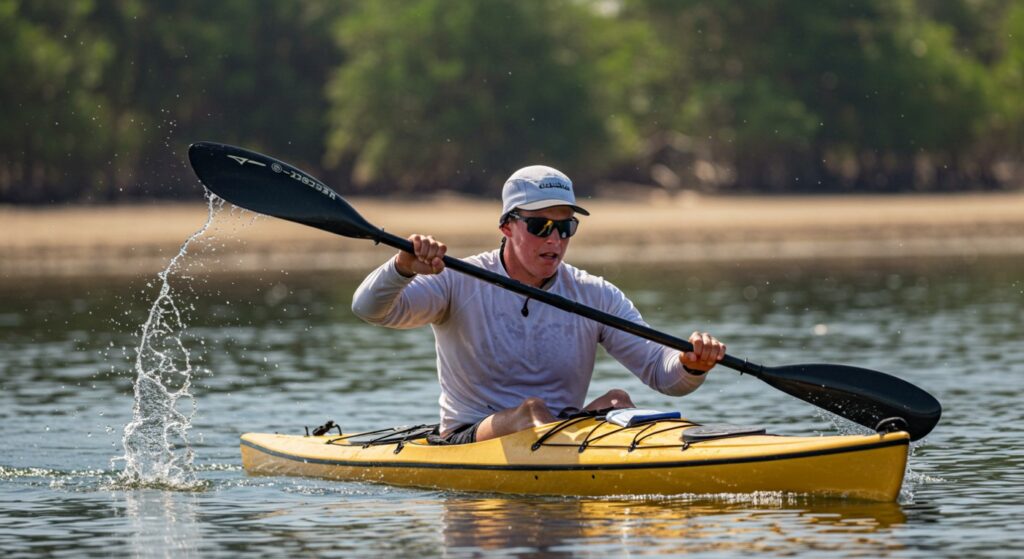
From June through September, daytime temperatures regularly top 40 °C (104 °F) and can spike past 45 °C (113 °F). Humidity often exceeds 70 percent, turning calm lagoons into virtual steam rooms.
- Kayaking feasibility: Limited to sunrise or post-sunset outings, and only with experienced guides who carry ample water and safety gear.
- Risks to consider: Heat exhaustion, dehydration, sunburn, and reduced wildlife activity. Sandstorms and shamal winds are more common, which can stir up silt and reduce visibility.
- Who should attempt it? Seasoned paddlers living locally, or visitors with tight travel windows who understand the risks and are willing to paddle at dawn.
Month-by-Month Suitability at a Glance
| Month | Avg. Daytime High | Water & Wind | Wildlife Activity | Overall Suitability |
|---|---|---|---|---|
| Jan | 24 °C / 75 °F | Calm, clear | Peak migratory birds | ★★★★★ |
| Feb | 25 °C / 77 °F | Calm | High | ★★★★★ |
| Mar | 28 °C / 82 °F | Light breeze | High | ★★★★☆ |
| Apr | 33 °C / 91 °F | Slight chop | Moderate | ★★★☆☆ |
| May | 38 °C / 100 °F | Breezy afternoons | Low | ★★☆☆☆ |
| Jun | 41 °C / 106 °F | Hot wind | Very low | ★☆☆☆☆ |
| Jul | 42 °C / 108 °F | Possible sandstorms | Very low | ★☆☆☆☆ |
| Aug | 42 °C / 108 °F | High humidity | Very low | ★☆☆☆☆ |
| Sep | 40 °C / 104 °F | Humid, calmer late month | Low | ★★☆☆☆ |
| Oct | 35 °C / 95 °F | Manageable mornings | Moderate | ★★★☆☆ |
| Nov | 30 °C / 86 °F | Calm | High | ★★★★☆ |
| Dec | 26 °C / 79 °F | Calm, clear | Peak birds, good visibility | ★★★★★ |
*Five stars = ideal for all paddlers; one star = for experts only and at limited times of day.
Packing and Preparation Tips by Season
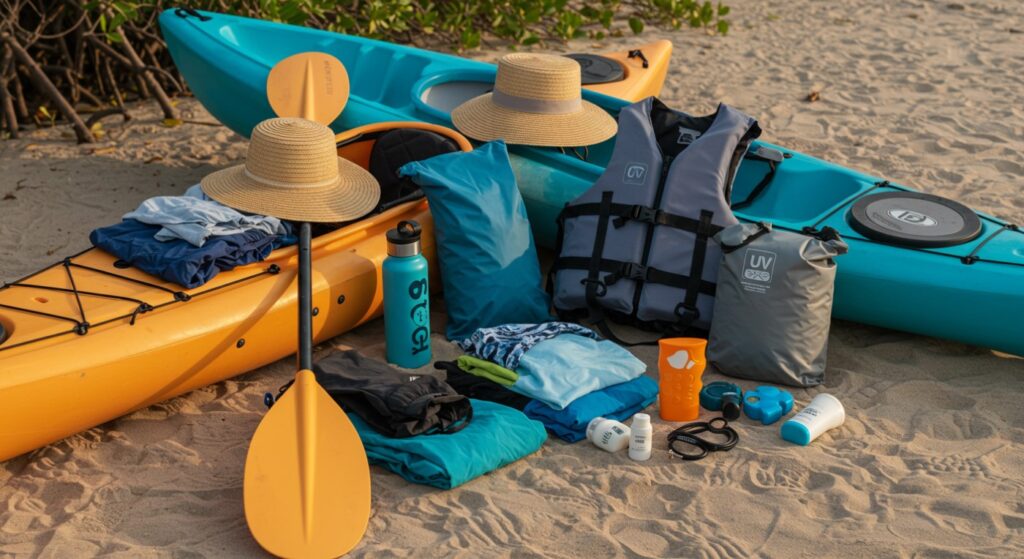
Cool Season (Nov – Mar)
- Quick-dry layers or lightweight neoprene for early-morning chill.
- Binoculars and telephoto lens for bird photography.
- Mid-tide departures maximise mangrove access.
Shoulder Months (Apr, Oct)
- Long-sleeve UV shirts, wide-brim hat, 1–2 L of water per person.
- Electrolyte tablets to offset rising humidity.
- Opt for shorter routes or shaded breaks beneath overhanging mangroves.
Summer (Jun – Sep)
- At least 3 L of water, insulated flask with ice.
- High-SPF, sweat-resistant sunscreen and UV sunglasses.
- Book only at dawn; confirm wind forecasts the night before.
Booking and Safety Considerations
- Advance reservations: Peak-season tours fill quickly—book at least a week ahead in December and January.
- Guide expertise: Choose operators who adjust launch times to both tides and weather; this is essential for safe mangrove navigation.
- Group size: Smaller groups (max 8 paddlers) reduce wildlife disturbance and offer a quieter experience.
- Emergency readiness: Reputable outfitters carry VHF radios, first-aid kits, and extra hydration—ask before you book.
Key Takeaways
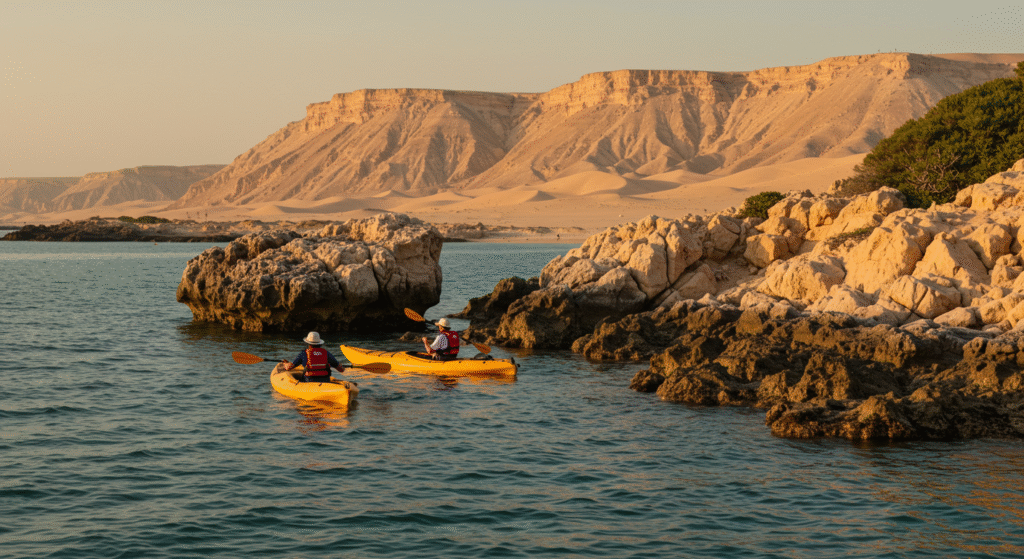
- November to March delivers the coolest air, calmest water, and richest wildlife—hands-down the best time for most paddlers.
- April and October work well for crowd-averse travelers willing to paddle early or late.
- June to September should be avoided by casual visitors; if you must kayak, plan a sunrise launch, bring ample water, and go with an experienced guide.
Timing your trip around these seasonal patterns ensures a safe, memorable, and wildlife-rich kayaking adventure in Abu Dhabi’s unique mangrove and coastal ecosystems.
FAQs
1. When does kayaking season start in Abu Dhabi?
The ideal kayaking season in Abu Dhabi runs from October to April, when the temperatures are mild and the water conditions are calm. This period aligns with the cooler, more comfortable months for all outdoor activities in the UAE.
2. Is it possible to kayak during the summer in Abu Dhabi?
Yes, but it’s only recommended very early in the morning or right before sunset, and you should stay well-hydrated. Summer temperatures can reach extreme highs, so if you kayak from May to September, opt for shorter sessions and guided tours with safety protocols in place.
3. What’s the best time of day for kayaking in Abu Dhabi?
Early morning (around 6:00–8:30 AM) or sunset hours (4:30–6:00 PM) offer the best light, calm winds, and cooler temperatures. These times are also great for wildlife spotting, especially in mangrove areas.
4. Where are the best kayaking spots in Abu Dhabi during peak season?
Top spots include Jubail Mangrove Park, Eastern Mangrove Lagoon National Park, and the tranquil waters around Reem Island. These areas remain lush and accessible throughout the winter kayaking season.
5. Is kayaking suitable for beginners during peak months?
Absolutely. During the cooler months, the waters are generally calm, making it ideal for beginners and families. Guided eco tours often include a short safety and paddling briefing to make it beginner-friendly.
6. What should I wear when kayaking in Abu Dhabi?
Lightweight, quick-drying clothing, a hat, sunglasses, water shoes, and reef-safe sunscreen are ideal. During winter, bring a light windbreaker, especially for early or late paddling sessions.
7. Are kayaking tours in Abu Dhabi affected by tides or weather?
Yes. Tides can influence certain mangrove routes, and strong winds may occasionally delay or reroute tours. Reputable operators monitor weather conditions and will notify you in advance if rescheduling is necessary for safety.
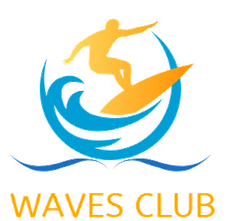

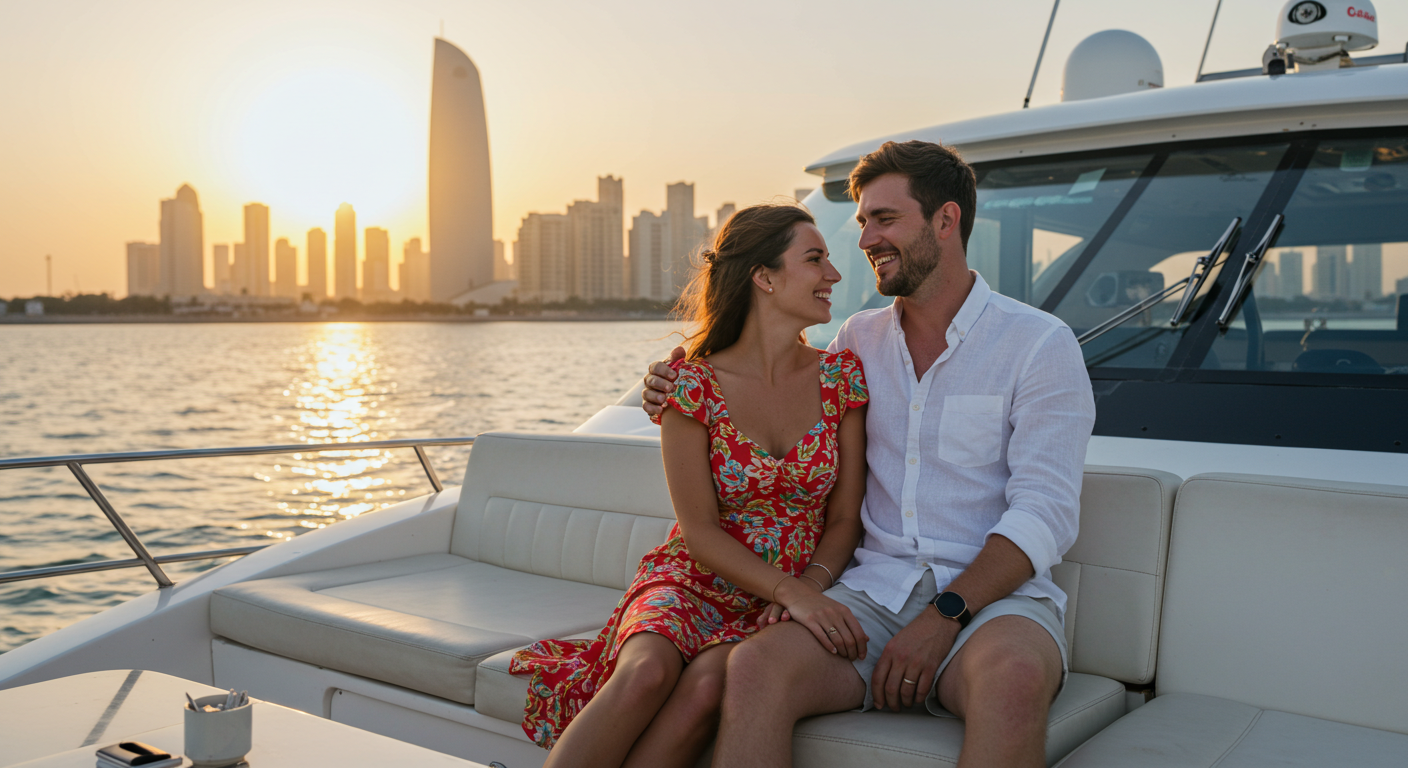
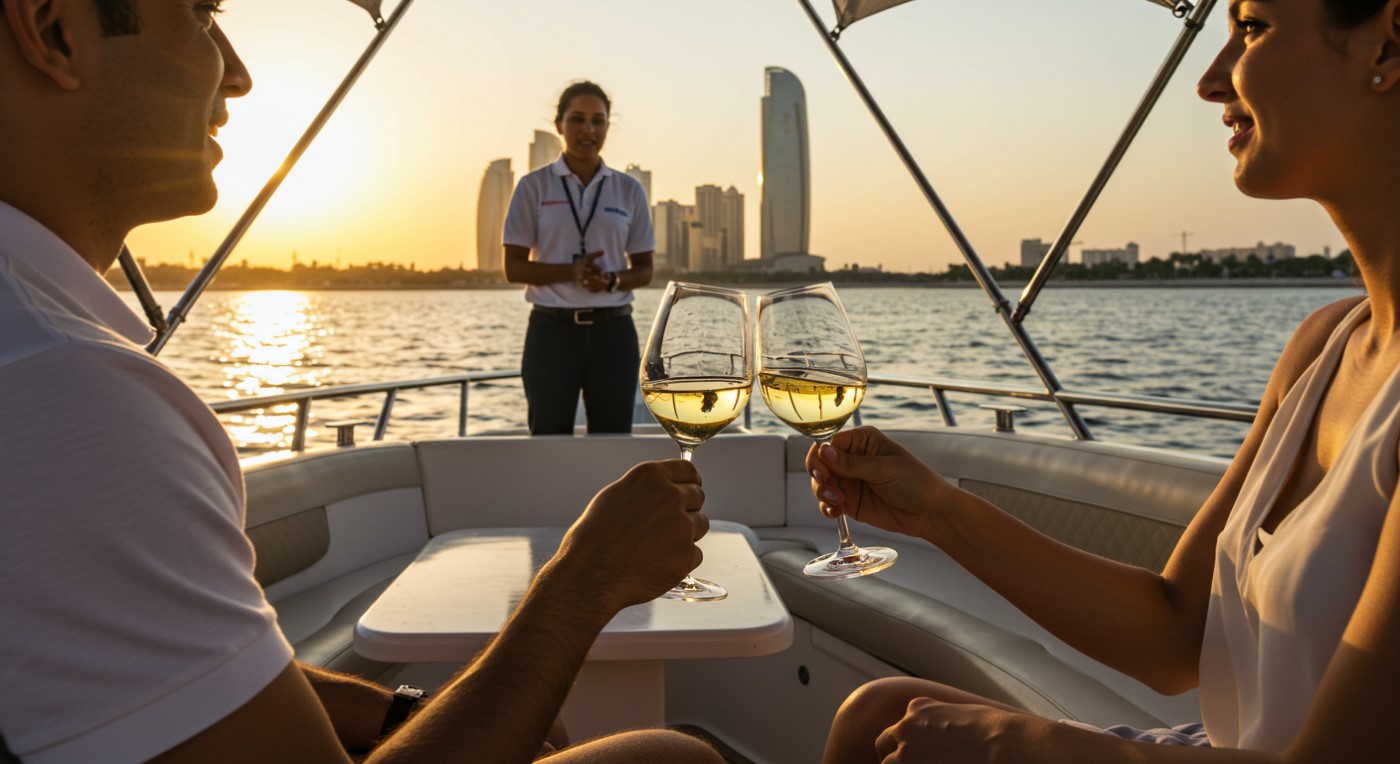
Pingback: How to Plan a Day Trip to Yas Waterworld Abu Dhabi - UAE Wave Club